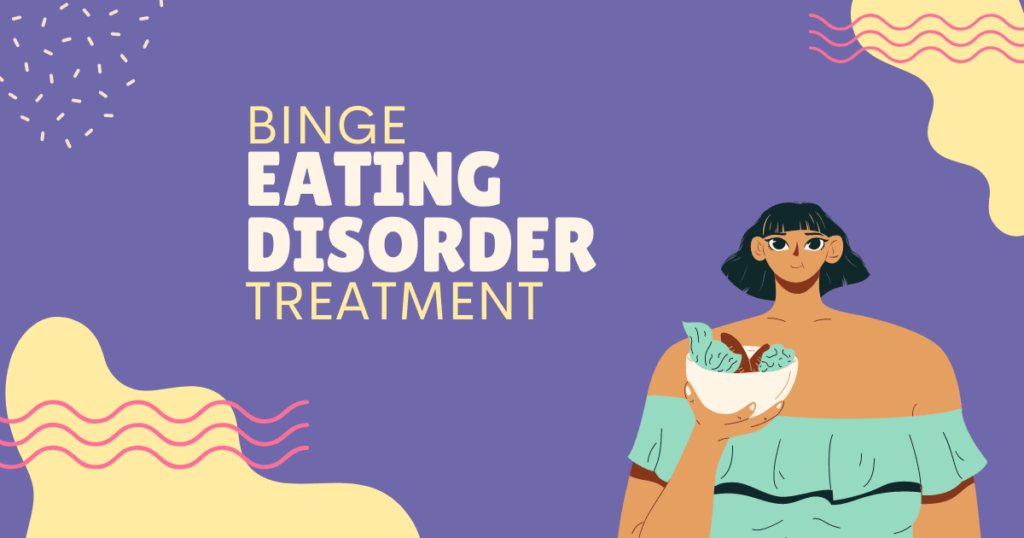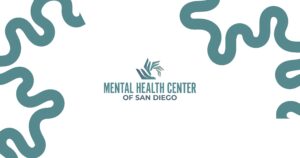When someone struggles with Binge Eating Disorder (BED), they often require intensive eating disorder treatment. Untreated, BED can be life-threatening, but it is treatable.
Other Eating Disorders (ED) include anorexia nervosa and bulimia nervosa. These are frequently accompanied by another mental health condition and a generally unhealthy relationship with food.
What is Binge Eating Disorder
BED is a potentially severe but treatable eating disorder. Periods of eating vast amounts of food characterize BED. Someone with BED might not only eat a lot but do so very quickly to the point that it’s uncomfortable. There’s a loss of control during a binging session. The person will then feel shame, guilt, or distress.
BED is the most common eating disorder in the United States and one of the newest to receive formal recognition in the DSM-5. Around 2% of people globally are affected by the disorder, leading to mental and physical health complications.
Based on evidence and research, we know that eating disorders aren’t about food alone. Sometimes they’re hardly about food at all, despite the symptoms. Feeding and EDs are psychiatric disorders that people can develop to deal with another issue or psychiatric condition such as an anxiety disorder, a substance use disorder, bipolar disorder, or obsessive-compulsive disorder.
Symptoms of Binge Eating Disorder
The defining element we see in individuals with binge eating disorders is eating a lot of food in a short window of time, regardless of whether or not you are hungry. Emotional distress often triggers binge eating. While eating is happening, some people feel relief. Then, afterward, these feelings can turn to shame and feelings of a lack of control.
For a mental health professional to make a diagnosis, three or more symptoms must occur according to DSM-5 criteria. These disorder symptoms and diagnostic criteria for BED patients are:
- Faster food intake than normal during a binge episode
- Eating until you’re uncomfortably full during recurrent episodes.
- Having large amounts of food despite not feeling hungry.
- Embarrassment or shame leads to eating alone.
- Feelings of disgust or guilt with yourself.
It’s common for someone with this kind of disordered eating to feel extreme unhappiness when they think about their overeating and their body weight and body shape, even when they’re medically an average weight. Body dissatisfaction and distorted body image are common across all EDs.
Some people may overeat occasionally, but that doesn’t necessarily mean they have an eating disorder. BED usually starts when people are in their late teens or early 20s, and untreated, it can last for years.
- You must have had at least one binge-eating episode a week for a minimum of three months for a diagnosis.
- Severity can be mild to severe.
- Mild is one episode of binge eating to three episodes a week.
- Extreme or severe BED is 14 or more episodes of binge eating a week.
- Binge eating disorder doesn’t include purging or trying and undo the effects of binge eating. In bulimia, a person might take laxatives, throw up or do excessive amounts of exercise to try and make up for their binging. These are known as compensatory behaviors.
As with other EDs, BED is more common in women than men.
What Causes Binge Eating Disorder?
The causes of BED aren’t fully understood but are likely associated with a range of risk factors. These can include:
- Genetics: Some research indicates we may associate BED with increased sensitivity to dopamine. Dopamine is a brain chemical responsible for feelings of pleasure and reward.
- Gender: As mentioned, the prevalence of BED is more common in women than men, and it could stem from biological factors.
- Brain changes: People with BED may have differences in their brain structure that contribute to less self-control and a heightened food response.
- Body image: Often, patients with binge eating issues have extremely negative views of their bodies.
- Emotional trauma: Having stressful events in your life could raise your risk of developing an eating disorder like BED. For example, physical abuse or sexual abuse, or the death of someone they’re close to could contribute to binge eating disorder.
- Mental disorders: Nearly 80% of people who have a BED diagnosis also have other co-occurring mental health disorders like depression, post-traumatic stress disorder, substance abuse, or anxiety.
Untreated, there are a lot of physical health and medical conditions that can develop. For example, people with BED are at a higher risk of being overweight or obese and have a more challenging time maintaining a healthy weight. These factors can contribute to high blood pressure and heart disease risk.
Treatments for Binge Eating
Many of the same strategies for BED stem from other approaches to eating disorder treatment. Eating disorder treatment may include talk therapy, medications, or a combination. The goal is to reduce symptoms, improve quality of life, and treat health consequences and mental health issues related to disordered eating.
Cognitive Behavioral Therapy (CBT)
CBT is a talk therapy that focuses on negative thought patterns. A person in CBT will work with their therapist to identify negative ways of thinking and then change them into more productive and positive ones. Dialectical behavior therapy is a similar approach that can be used for eating disorder recovery.
The concepts underlying CBT include those unhealthy ways of thinking lead to psychological problems. CBT also relies on helping participants learn healthier coping mechanisms to relieve their symptoms.
CBT-E is specifically an eating disorder treatment. In CBT-E, someone with a binge eating disorder is an active participant in all treatment areas. They have the final say on each decision, which helps promote feelings of being in control.
There are four stages of CBT-E.
In the first stage, you work on developing an understanding of your problematic eating behaviors. You learn to stabilize your patterns. In the second stage of CBT-E, you begin to review your progress and make plans.
By stage three, your focus is on learning how to deal with things in your day-to-day life.
In the final stage, you think about how you can deal with setbacks and focus on the future.
Interpersonal Psychotherapy for Eating Disorders (IPT-ED)
Researchers have found people with binge eating disorders have much higher rates of interpersonal problems. These lead to further psychological distress. The interpersonal problems could exist before BED or result from the eating disorder.
No matter which order they occur in, the interpersonal problems then allow BED’s problematic behavior to continue.
Interpersonal psychotherapy can occur in group or individual formats, and it usually follows a course of three phases for a total of 20 weekly sessions.
Mindfulness-Based Eating Awareness Training (MB-EAT)
MB-EAT uses mindfulness to help people learn more about their cues for hunger and fullness. You learn how to cope with emotional triggers that contribute to binge eating, chew food slowly, and be more in tune with what food tastes like. The goal is to help you learn how to eat intentionally.
Medication
Certain medicines are sometimes used as part of an eating disorder treatment plan.
For example, second-generation antidepressants can have a positive impact. Second-generation antidepressants include Lexapro, Prozac, and Paxil.
Topiramate, known as the brand name Topamax is an anticonvulsant that is sometimes used off-label for the treatment of BED.
Lisdexamfetamine or Vyvanse is a prescription stimulant to treat ADHD that can also reduce binge eating. This medication was the first drug approved by the FDA to treat moderate to severe binge eating disorders in adults.
Lifestyle Changes
There are also several things you can do on your own to work toward recovery. You can learn how to identify your triggers, make a meal plan to be mindful and intentional about eating, and keep busy when you’re feeling anxious or stressed.
In some cases, the treatment of binge eating might require residential treatment. Eating disorder treatment centers or an eating recovery center can provide the high levels of care that some people need to get on the road to recovery. This might include medical care, family therapy, and a combination of other types of therapy.
If you’d like to learn more about eating disorder treatments in San Diego, please reach out to the Mental Health Center of San Diego today by calling (858) 258-9883.















